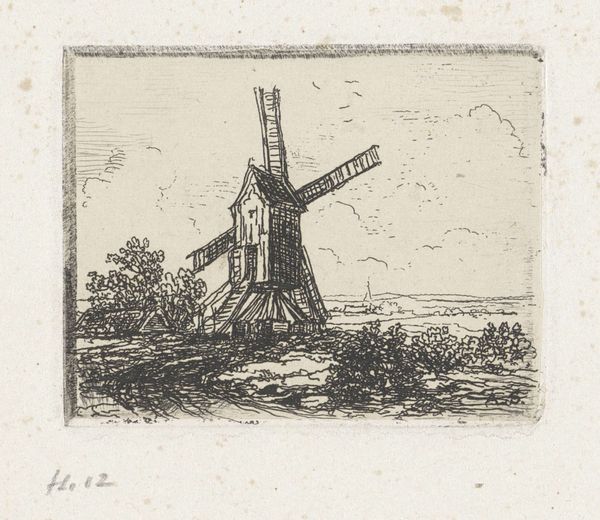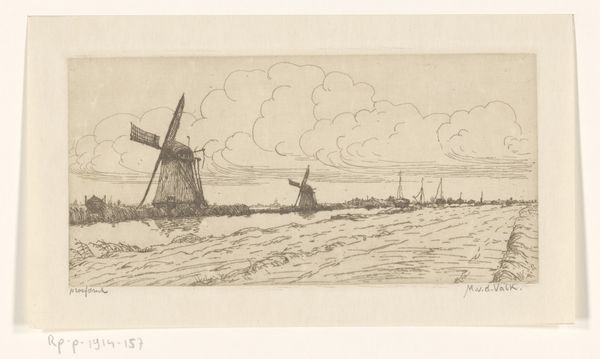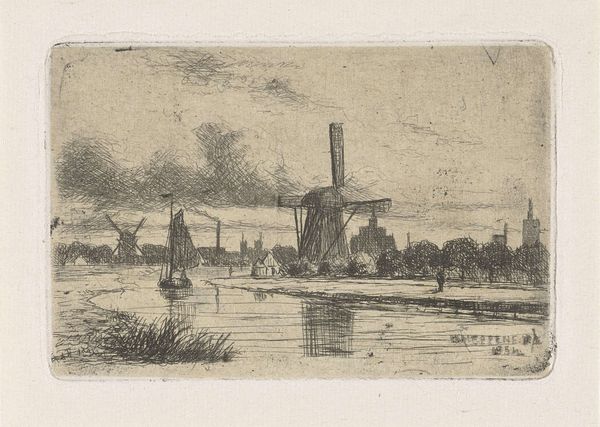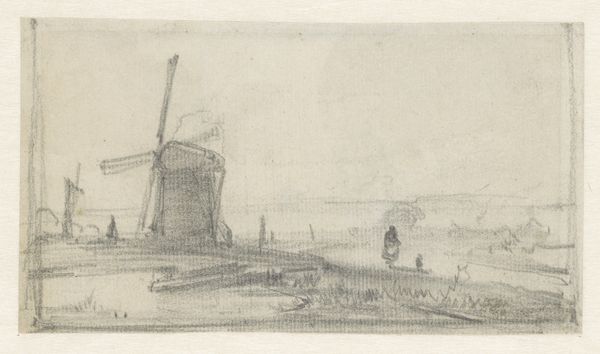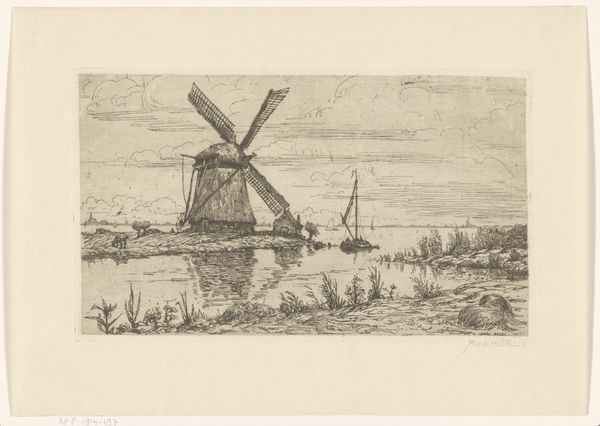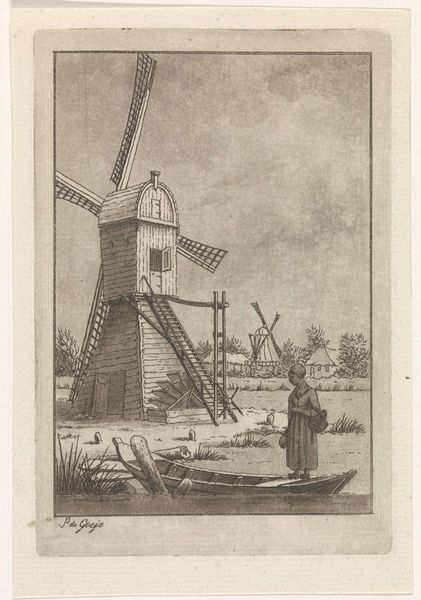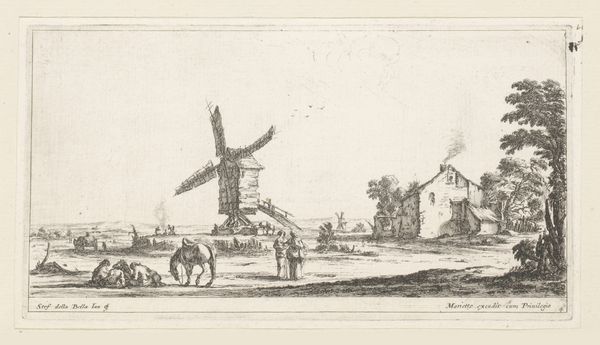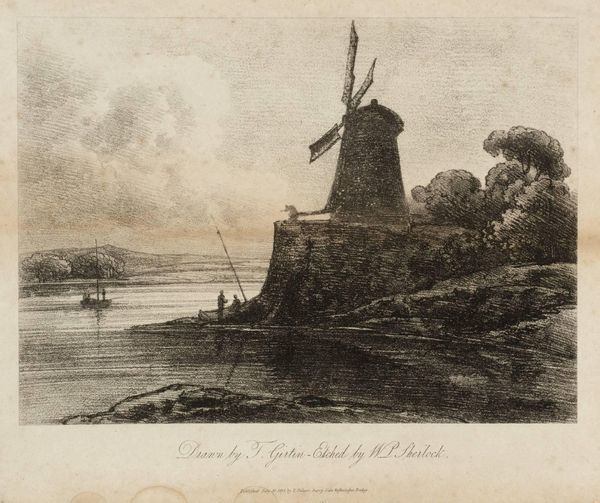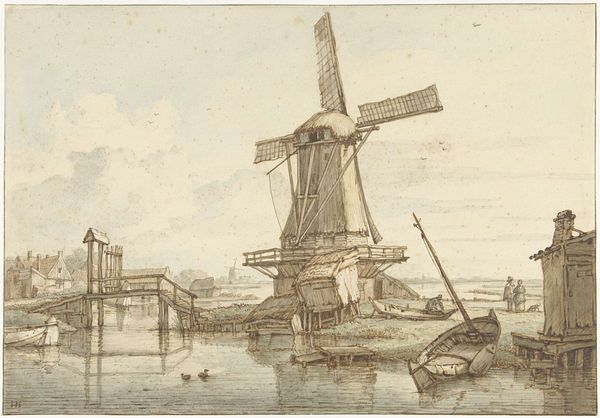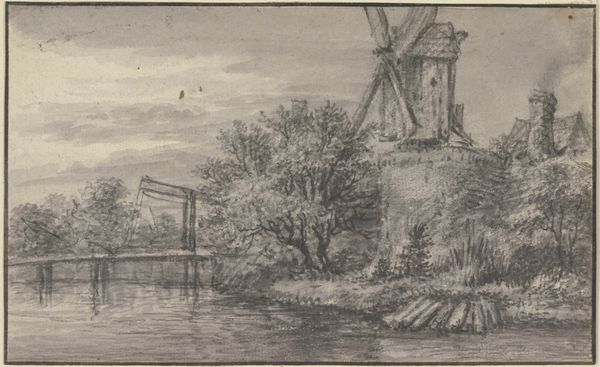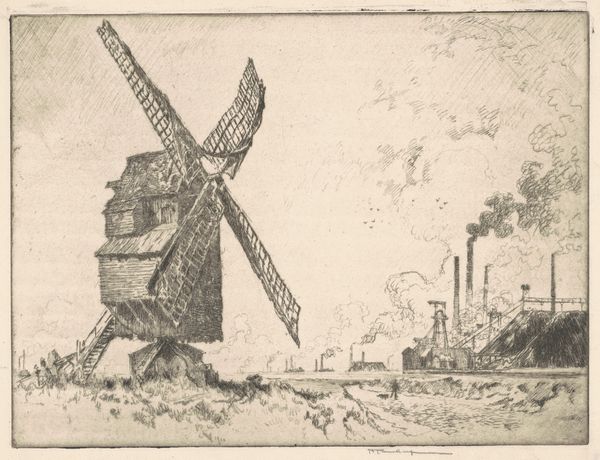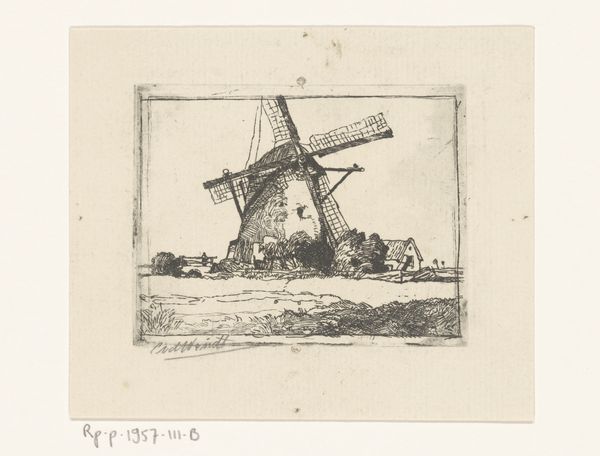
print, woodcut
# print
#
landscape
#
romanticism
#
woodcut
Dimensions: 58 mm (height) x 82 mm (width) (bladmaal)
Editor: Here we have Andreas Flinch's "Two Stub Mills by a Road," a woodcut print from 1848. I’m immediately drawn to the stark contrast of the black lines against the white paper; it creates a rather melancholic atmosphere, almost as if this scene is viewed from a nostalgic distance. How would you interpret this piece through a formalist lens? Curator: Precisely, observe how the artist orchestrates our gaze through a calculated arrangement of line and form. The dominance of horizontal lines in the sky is echoed on the sloping fields and road which creates a planar effect. Now, examine how the verticality of the mills is framed by this deliberate contrast, creating tension and balance, particularly noting the textured detail afforded to the mills in the foreground. The formal dynamic lends itself to our reading of melancholy. Do you notice the lack of true tonal variation which speaks to the materiality of print? Editor: That's a fascinating perspective! I hadn’t considered how the materiality informs our interpretation. The roughness of the lines in the woodcut truly enhances that sense of bleakness. How would that choice then further guide my understanding of this romantic landscape? Curator: The interplay of these formal elements suggests a controlled engagement with the inherent properties of the medium to evoke specific emotions. The reductive quality amplifies the minimalist theme – almost forcing a concentrated gaze on the essentials of the landscape. Do you think it succeeds in its atmospheric and technical synthesis? Editor: I think it does. I initially focused on the melancholic feeling, but now I appreciate how the specific woodcut medium accentuates that sentiment through its own inherent qualities of line and texture. Thank you; it’s really valuable to have the connection between form and interpretation so clearly explained. Curator: Indeed, the medium isn’t just a vehicle; it’s integral to meaning. This close look helps us perceive how artistic choices, such as the constraints of a woodcut, are embraced as compositional virtues.
Comments
No comments
Be the first to comment and join the conversation on the ultimate creative platform.
